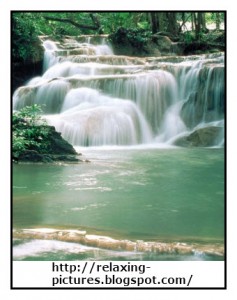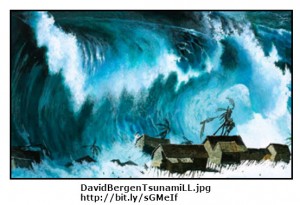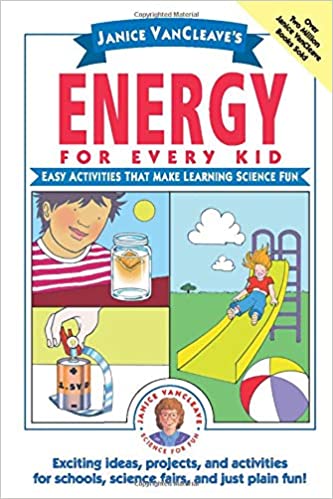
What is Matter?
Matter is anything that has mass and takes up space, such as water. The photo shows water first falling and filling and collecting at the bottom of the waterfall. When the collected water increases in volume, the water spills over a rock boundary.
Water takes up space. Volume is the amount of space that matter occupies.
Metric volume measurements include:
liter and milliliter as well as cubic centimeters or cubic meters.
English volume measurements include:
gallon, quart, pint, and cup as well as cubic inches, cubic feet, or cubic miles.
Water also has mass, which means it is made up of physical particles. Don’t confuse mass with weight. While they are related, they are not exactly the same.
Weight measures the amount of gravitational force pulling on an object.
Mass measure how difficult it is to start or stop the motion of an object. In other words, mass measures the inertia of matter.
Note: It would be correct to say that matter has both volume and inertia.
The artist’s rendition of a tsunami striking a small village is a visual representation of a large amount of water with a great amount of inertia.
There is no stopping a tsunami.
Another Definition of Matter
Matter based upon its physical and chemical structure, can be defined as any substance made up of elements and/or compounds
A substance is matter of one chemical composition. Elements and compounds are substances.
An element is made of one kind of atom, which is the smallest particle of an element that retains the properties of the element. Examples of elements are gold, sulfur, oxygen, helium, and calcium.
Compounds are made up of two or more atoms.
Water ( H2O ) is a compound made up of hydrogen (H) and oxygen (O).
Sodium chloride ( NaCl ) is a compound made up of sodium (Na) and chlorine (Cl). a
There are two types of compounds:
Covalent compounds (molecules): The atoms in covalent compounds are held together by special bonds called covalent bonds. These bonds are strong because the atoms share electrons.
Ionic compounds: The atoms in ionic compounds are held together by forces between charged particles. These bonds are called ionic bonds.
A simple way to explain the difference between covalent and ionic compounds is to compare the dissolving of table sugar and table salt in water.
Table sugar, called sucrose is a covalent compound. When a spoon of sucrose is dissolved in water, the sugar crystals break apart until they separate into single particles called molecules. The formula for one sucrose molecule is C12H22O11. Even though this molecules has 45 atoms it is still too small to be visible.
Table salt, called sodium chloride is an ionic compound. When a spoon of sodium chloride is dissolved in water, the salt crystals break apart until the atoms separate from each other.When the atoms pull apart, one atom always “steals” an electron from the other atom. Atoms that have lost an electron have a positive charge and atoms that have gained an electron have a negative charged. Charged atoms are called ions.
In sodium chloride, the chlorine atom is the “electron thief,” thus the symbol for sodium with its extra atom is Na 1+. Chlorine lost an electron so it The formula for one sucrose molecule is C12H22O11. Even though this molecules has 45 atoms it is still too small to be visible.
I like this definition of matter. Now mass can be defined as the amount of matter in a substance.
Note: At a more microscopic level, one could say that matter is made up of what atoms, ions, and molecules are made of.
What are the States of Matter?
The three states of matter generally identified are: solid, liquid and gas. A fourth state of matter that is less commonly discussed is plasma. Plasma forms when a gas is heated, such as on the Sun or other stars, as well as during fluorescence inside a fluorescent light, such as on the Sun.
For more information about plasma see Chem4Kids: Matter: Plasma
The following information is about the three more commonly known states of matter: solid, liquid, gas.
States of Matter : Solid, Liquid, Gas
Ice is water in the solid form. This form, like all solids has a specific volume and shape. For example, an ice cube made in a mold takes the shape of the mold. But, one should not identify solids as taking the shape of their container because when you put an ice cube in a glass, the ice cube retains the shape it had before being in the glass.
Ice is colder liquid water or water vapor. This means that ice has less thermal energy, thus the molecules of water making up ice move slower. The freezing point of water is the temperature at which liquid water changes to a solid.
The freezing point for water is 320F (O0 C).
The melting point for water is also 320F (O0 C).
Gas is a state of matter that doesn’t have a set volume. Instead, if a gas is in a closed container, the gas has the volume and shape of the container. Water in a gas state is called
water vapor.
It is important to know that something gets colder because it loses heat. Heat is the transfer of energy from something that is hot to something that is cold. In other words, ice in a glass of water is not adding “cool” to the water. Instead, the water is transferring heat to the ice.
Why Matter Changes State
The state of matter depend on the thermal energy of the particles that the matter is made of. The particles of water are called molecules. As the thermal energy of water molecules increase, the molecules move faster and if possible move apart. Gases have the most thermal energy and single gas particles move in a straight line until they hit some boundary and bounce back in another direction.
As the thermal energy of liquid water molecules decreases, the water molecules move slower and get closer together. At freezing point of water, the water molecules bond together forming a six-sided ring.
Cohesion is the name of the attractive force between like molecules. This force is not very strong, so the molecules have to be close together and with little motion.
Activity: Students Model Hexagonal Ice Crystal Units.
Kids can model hexagonal ice crystal units. The diagram is an overhead view showing the head, arms and hands of students. Each color represents a single water molecule with the circle (student head) being oxygen, the colored lines (student arms) represent bonds and the white circles (student hands) are hydrogen atoms.
The completed hexagon is made of six different students. Note that each kid only connects to one other kid in the hexagon. This connection is made by placing a hand on the shoulder of the kid next to them. Their second hand connects to a kid that will form a joining hexagon. In other words, each kid (water molecule) links to two different kids (water molecules).
The ice crystal units made of water molecules are many layers deep and spread out in all directions. This student model will be on one plane and can stretch out as far as there are kids to connect to.
The Following Terms Describing Opposite Changes of Matter
- melting <—->freezing;
- evaporation <—->condensation;
- vaporization <—>condensation;
- boiling <—>condensation;
- sublimation <—>deposition
(Paid Link)


